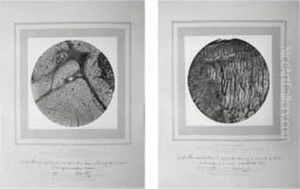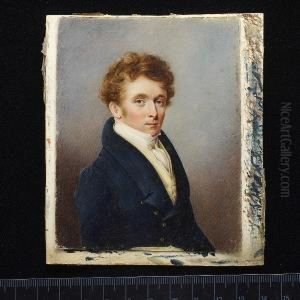Joseph Janvier Woodward Paintings
Joseph Janvier Woodward was a notable figure in the 19th century, primarily recognized for his contributions in the fields of medicine, microscopy, and military surgery, rather than being known as an artist in the traditional sense. Born on October 30, 1833, in Philadelphia, Pennsylvania, Woodward was not only a physician but also an accomplished researcher and a pioneer in the use of the microscope in medical diagnostics.
His education was extensive and impressive; he graduated from the University of Pennsylvania with a degree in medicine in 1853. After his graduation, Woodward began a career that would be marked by innovation and service. He joined the Union Army at the start of the American Civil War and quickly became an integral part of the medical community within the military. Woodward's work during the war involved the extensive use of the microscope to understand better the effects of disease and gunshot wounds on the human body. This was at a time when the use of such technology in medicine was still relatively new.
Woodward's contributions to the medical field were significant. He authored 'The Hospital Steward's Manual,' a guide for medical personnel in the military, and he was a key figure in the establishment of the Army Medical Museum, now known as the National Museum of Health and Medicine. His work in documenting the medical cases during the war was pioneering. He was also part of the team that produced the 'Medical and Surgical History of the War of the Rebellion,' which was one of the first comprehensive medical studies of wartime injuries and illnesses.
After the war, Woodward continued his work with the Army Medical Museum and became a leader in the study of infectious diseases, advocating for the importance of sanitary conditions in hospitals and in the field. He was an early adopter of Louis Pasteur's germ theory of disease and contributed to the development of medical practices that would save countless lives in the years to come.
Joseph Janvier Woodward's work was widely recognized during his lifetime. He was a member of numerous scientific societies, and his research and publications earned him international acclaim. He died on August 17, 1884, leaving behind a legacy as a medical pioneer who utilized the power of the microscope to transform our understanding of disease and injury. Though not an artist in the conventional sense, his meticulous medical illustrations and photographic documentation were, in their own right, a form of art that contributed immensely to the field of medical science.

